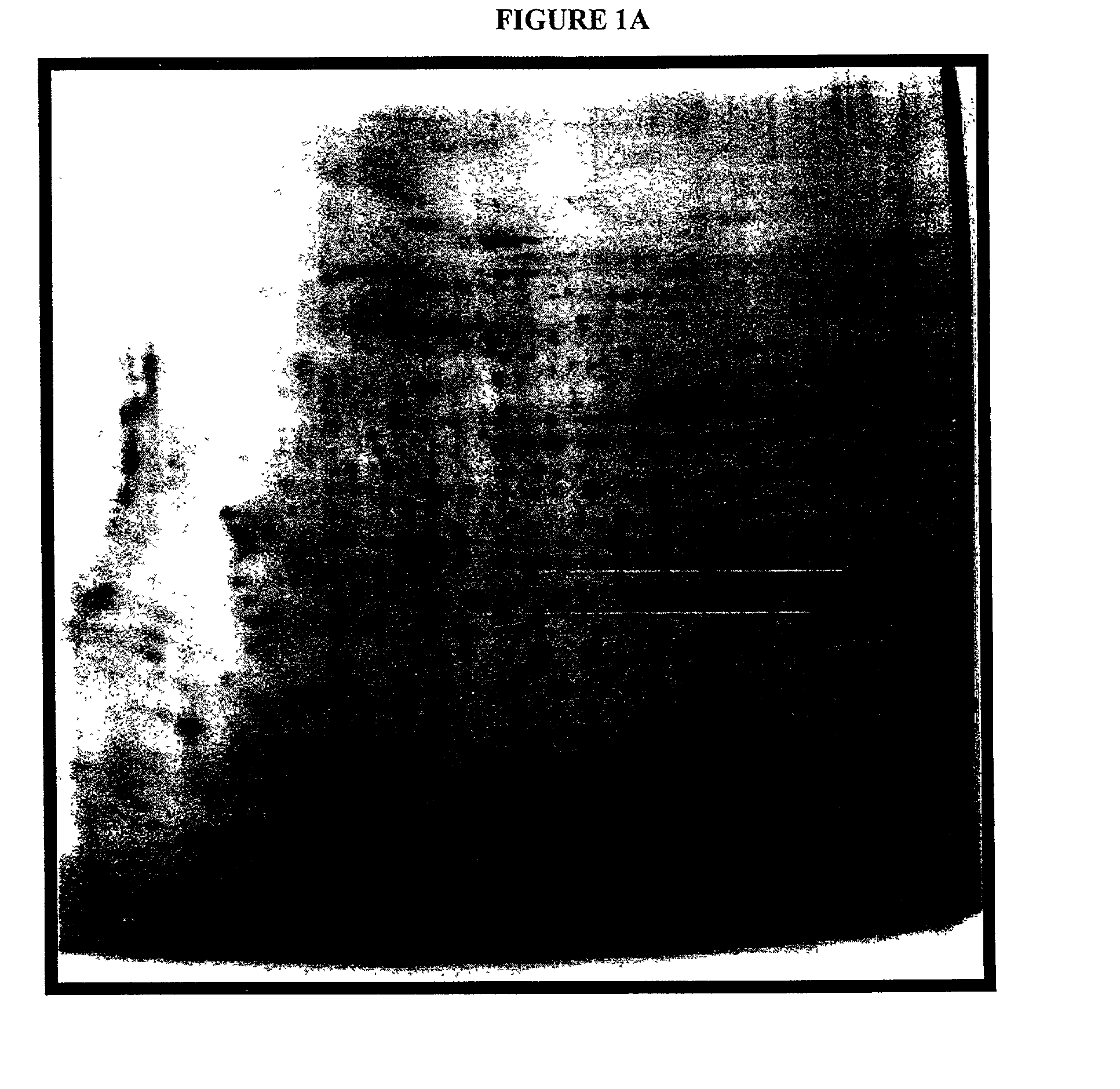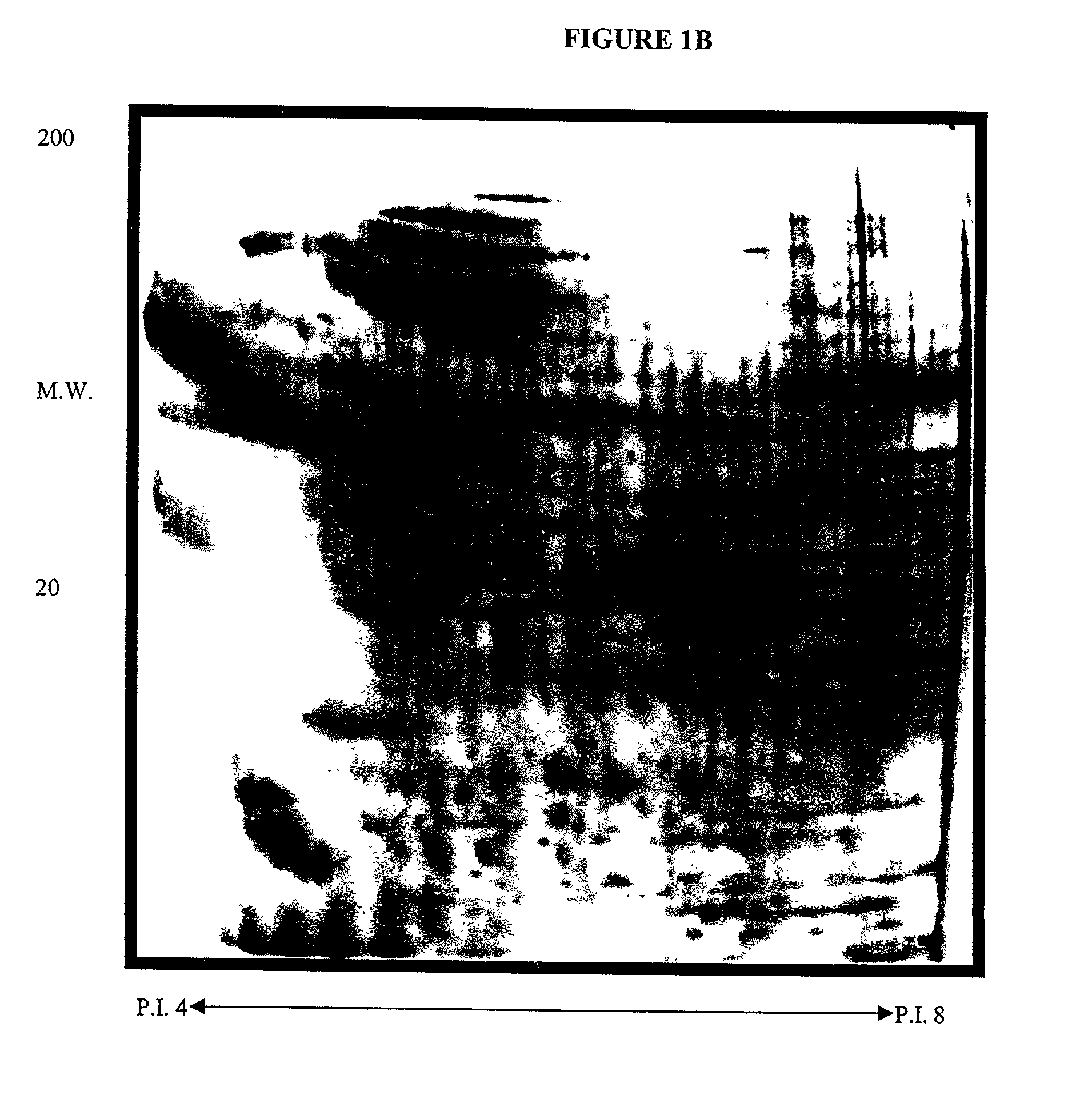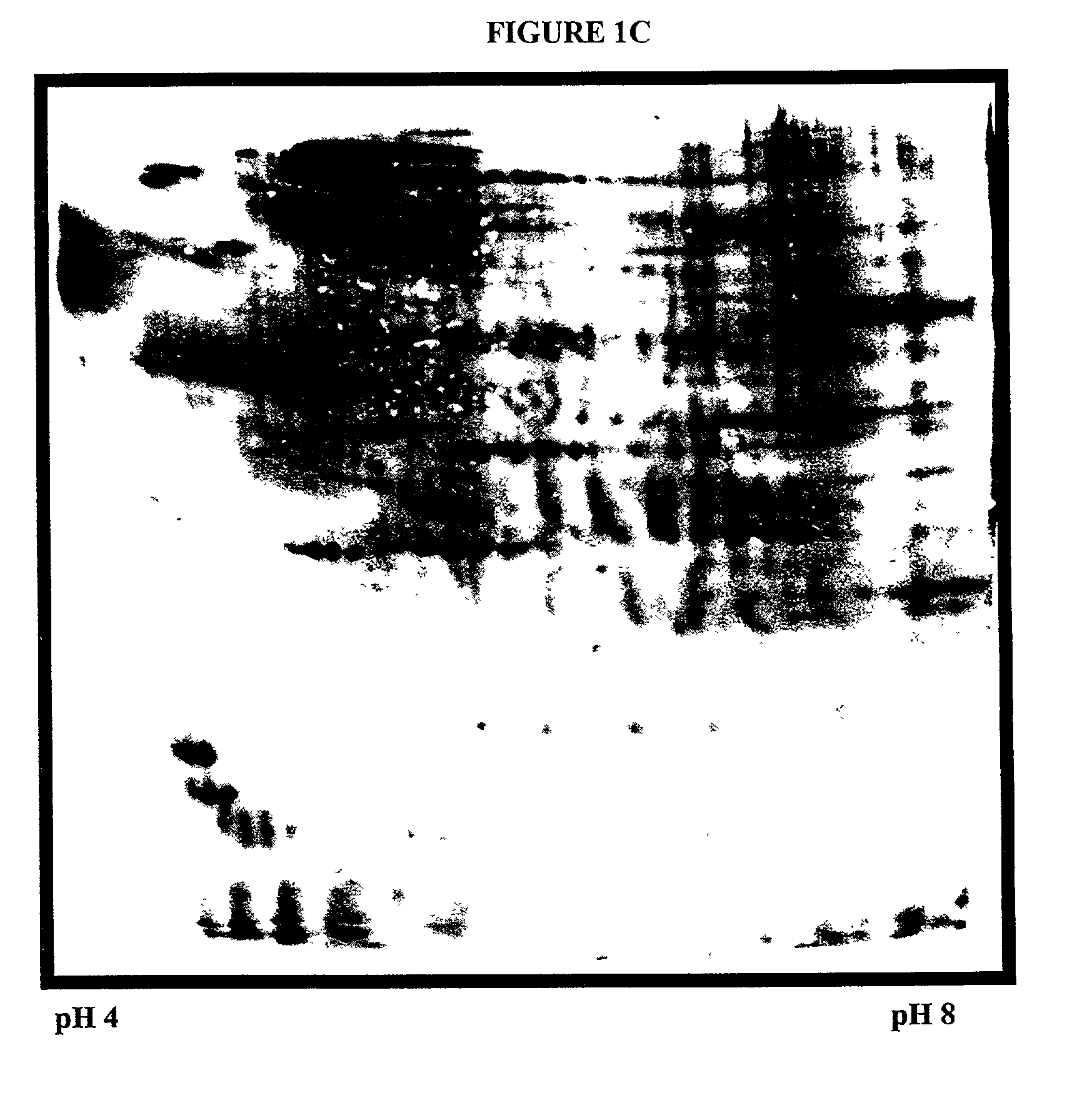Systems and methods for the analysis of proteins
a protein and system technology, applied in the field of systems and methods for the analysis of proteins, can solve the problems of not focusing on the biotinylation of intact cells, selective biotinylation of surface membranes, quantitative analysis of biotinylated proteins as opposed to individual peptides, etc., to achieve high affinity, increase the yield of protein subsets, and increase sensitivity
- Summary
- Abstract
- Description
- Claims
- Application Information
AI Technical Summary
Benefits of technology
Problems solved by technology
Method used
Image
Examples
example 2
Avidin Capture of Biotinylated Proteins
[0093] Monomeric avidin from Pierce Chemical Company (Rockford, Ill.) was used for the capture of biotinylated proteins. A 3 ml column of immobilized monomeric avidin column is prepared according to the manufacturer's instructions. The column is washed with PBS, followed by a solution of 2 mM D-Biotin in PBS to block any non-reversible biotin binding sites on the column, followed by a regeneration buffer (0.1 M Glycine, pH 2.8) to remove the loosely bound biotin from the reversible biotin-binding sites and then with 2.times.10 ml PBS. Biotinylated lysates are applied to the column that is maintained at room temperature for 1 h to increase avidin-biotin binding. The column is then washed with PBS to remove non-biotinylated proteins from the column. The absorbance of the fractions is monitored at 280 nm until all unbound proteins have been washed off the column and the absorbance of the fractions has returned to baseline. For elution of biotinyla...
example 3
Chromatographic Protein Separation
[0094] Systems have been assembled during the development of the present invention, including a 2-D HPLC system from individual components, which can be used for preparative LC, conventional-HPLC, Micro-HPLC, Capillary-HPLC and Nano-HPLC, in large part due to the capabilities of the pumps. The sensitivity of LC methods is a quadratic function of the LC column diameter. For a given mobile phase velocity, analyte peak volumes are proportional to peak width and the column cross-section area. Replacement of a conventional 4.6 mm internal diameter (ID) column by a 0.1 mm (ID) column yields a theoretical increase in sensitivity by a factor (4.6 / 0.1).sup.2=2116, assuming equal sample volumes are utilized and provided extra-column dead volumes are minimal.
[0095] Converting the system from macro to micro-LC is accomplished by changing:
[0096] 1) columns;
[0097] 2) tubings;
[0098] 3) the flow cell of the UV detector;
[0099] 4) sample loops.
[0100] The pumps, detec...
example 4
Protein Arraying
[0124] For immobilizing proteins in wells of a multi-well plate protein concentration in the wells ranged from 0.01 to 0.3 mg / ml.
[0125] Washing steps: PBS / 3% non-fat milk / 0.1% Tween-20 solution for 1 min, then PBS / 3% non-fat milk / 0.02% sodium azide o / n at 4.degree. C.
[0126] Hybridization with antibodies or antigens labeled with Cy3 / Cy5 dyes. Washing steps after hybridization included PBS / 0.1% Tween-20 for 20 min and then twice in PBS and twice in ddH.sub.2O, 5-10 min each. Spin the slides to dry.
[0127] Aldehyde treated slides may also be used for microarraying (Haab et al., Genome Biology 2:0004.1 [2001]).
[0128] Protein samples were prepared at 0.1 mg / ml in 60% PBS / 40% glycerol to prevent evaporation of the nanodroplets. After a 3-hour incubation in a humid chamber at room temperature, the slides were inverted and dropped onto a solution of PBS+1% BSA for 1 min. Then, right side up in the BSA solution for 1 h, room temperature, agitation is carried out followed by hy...
PUM
| Property | Measurement | Unit |
|---|---|---|
| spacer length | aaaaa | aaaaa |
| temperature | aaaaa | aaaaa |
| Flow rate | aaaaa | aaaaa |
Abstract
Description
Claims
Application Information
 Login to View More
Login to View More - R&D
- Intellectual Property
- Life Sciences
- Materials
- Tech Scout
- Unparalleled Data Quality
- Higher Quality Content
- 60% Fewer Hallucinations
Browse by: Latest US Patents, China's latest patents, Technical Efficacy Thesaurus, Application Domain, Technology Topic, Popular Technical Reports.
© 2025 PatSnap. All rights reserved.Legal|Privacy policy|Modern Slavery Act Transparency Statement|Sitemap|About US| Contact US: help@patsnap.com



